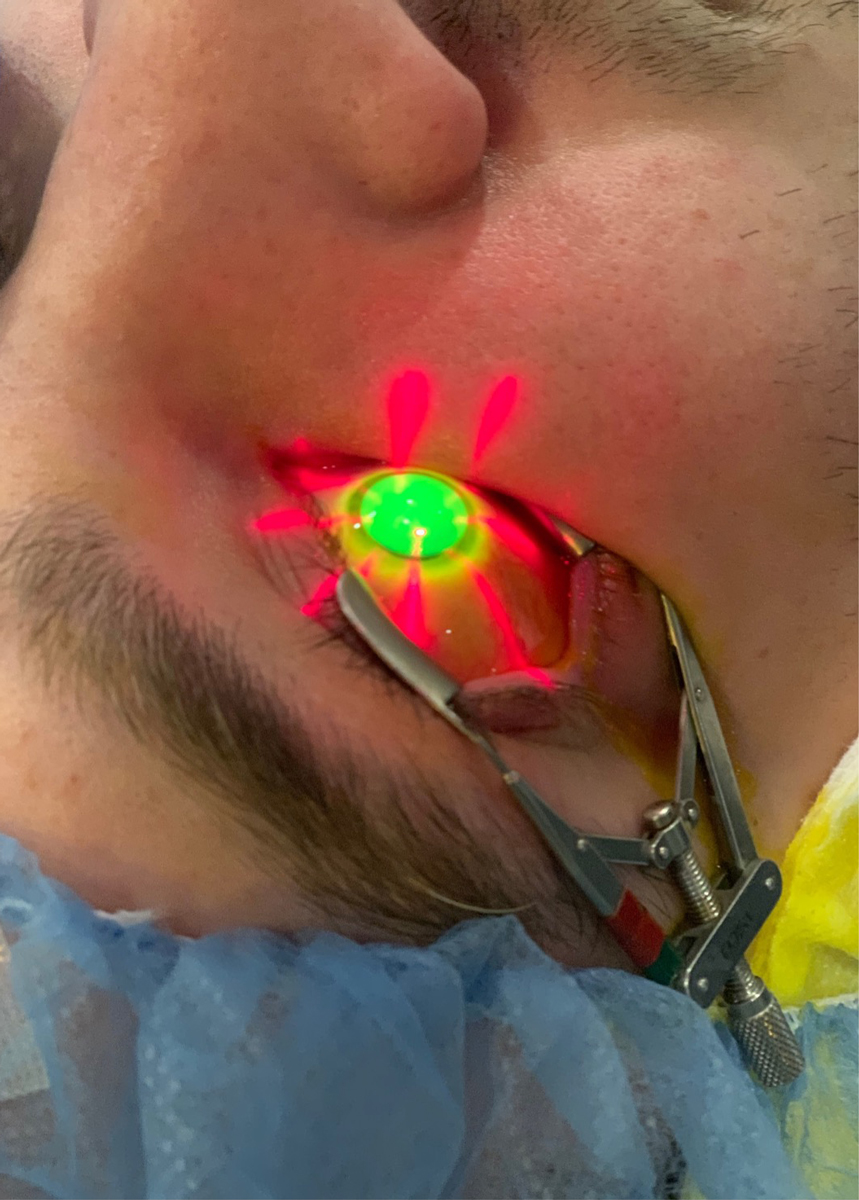 |
|
A second corneal collagen crosslinking procedure can stabilize keratoconus progression safely if the initial treatment fails. Photo: Lily Arendt, OD. Click image to enlarge. |
Corneal collagen crosslinking (CXL) is used to treat keratoconus, but despite the procedure’s high success rates, progression may still occur in roughly 2% to 8% of cases and in as many as 23% of high-risk eyes at one year and 18% at two years.1-3 Fortunately, CXL can be repeated with good outcomes. A recently published study in Cornea added to the body of evidence that repeated CXL is both safe and effective.4
The retrospective study included 10 consecutive eyes of nine post-epi-off CXL patients with progressive keratoconus who underwent repeated CXL (epi-off, accelerated protocol). Patients were around 20 years old at the time of diagnosis. The researchers reported that mean BCVA was stable throughout the approximately two-year follow-up period.
Changes in Kmax and pachymetry were observed. Mean baseline Kmax was 60.4D. Before the repeated CXL, the researchers observed significant mean Kmax progression to 62.2D, but at the last follow-up, mean Kmax had decreased significantly to 60.3D. Mean minimal pachymetry at baseline was 464µm. It was significantly lower before repeated CXL but stable after. The researchers reported no intraoperative or postoperative complications.
Based on their findings, the researchers concluded that a second procedure is safe. “In our cohort, we found that repeated CXL can stabilize keratoconus progression with no additional risk of complications,” they wrote. “Our data suggest that epi-off repeated CXL is safe and an excellent treatment option when failure of the initial CXL is diagnosed, even in young patients. Thus, this procedure may prevent the potential visual deterioration and need for keratoplasty.”
1. Greenstein SA, Hersh PS. Characteristics influencing outcomes of corneal collagen crosslinking for keratoconus and ectasia: implications for patient selection. J Cataract Refract Surg. 2013;39:1133-40. 2. Hatch W, El-Defrawy S, Ong Tone S, et al. Accelerated corneal crosslinking: efficacy, risk of progression, and characteristics affecting outcomes. A large, single-center prospective study. Am J Ophthalmol. 2020;213:76-87. 3. Kuechler SJ, Tappeiner C, Epstein D, Frueh BE. Keratoconus progression after corneal cross-linking in eyes with preoperative maximum keratometry values of 58 diopters and steeper. Cornea. 2018;37:1444-8. 4. Vorobichik Berar O, Rotenberg M, Berger Y, et al. Safety and efficacy of repeated corneal collagen crosslinking in progressive keratoconus. Cornea. 2022;00:1-6. |


